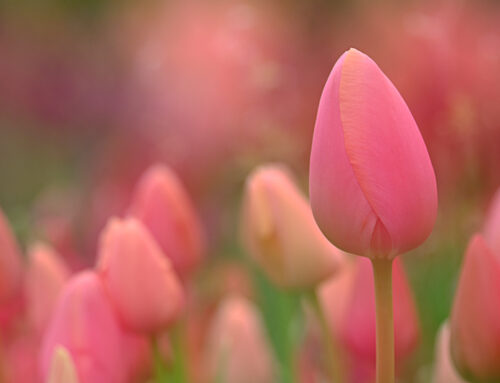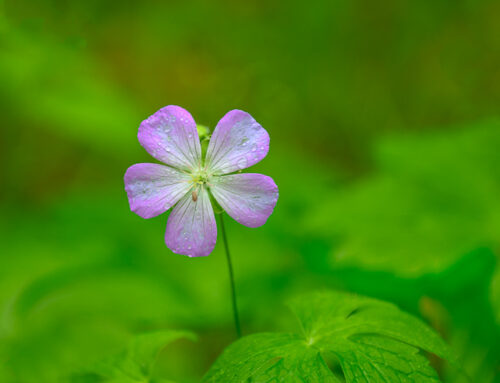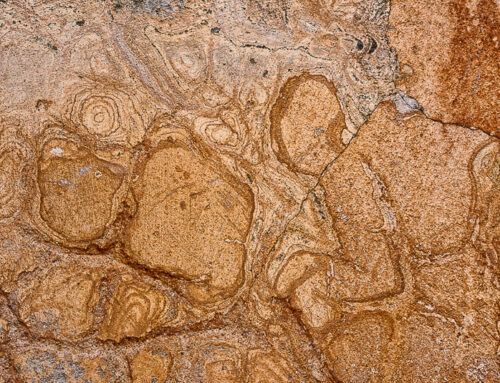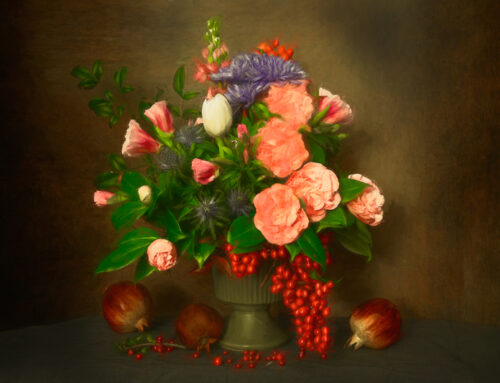I began to realize that the camera sees the world differently than the human eye and that sometimes those differences can make a photograph more powerful than what you actually observed. -– Galen Rowell
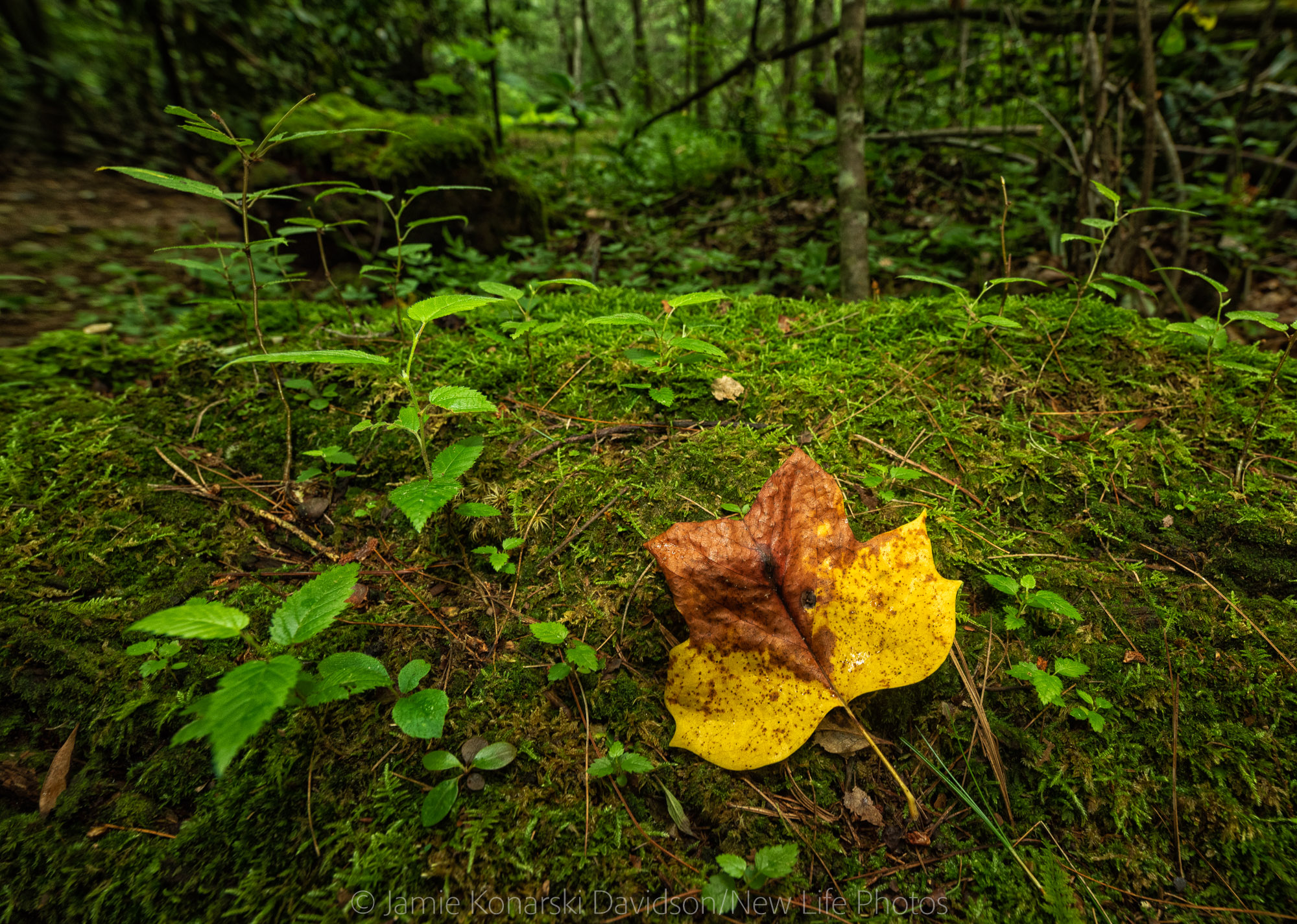
What feels like a contradiction of seasons is simply a part of nature that I cannot explain. A “fall” leaf fallen on a moss-covered log among the forest still feels fresh to me. This was one of the first images I made during my morning walks with “Fourteen.” What a different view . . .
I feel certain we’ve all had the experience of going to a place for the first time to “check it out.” Several weeks ago, that’s one of the things I did. I needed to see if this place “feels right” for one of my Dig Deeper workshops. It does.
However, to make things even more interesting, I decided to spend a morning walk at this new place with one new lens to “check it out.” I needed to see if I liked it enough to add it to my camera bag(s). I did.
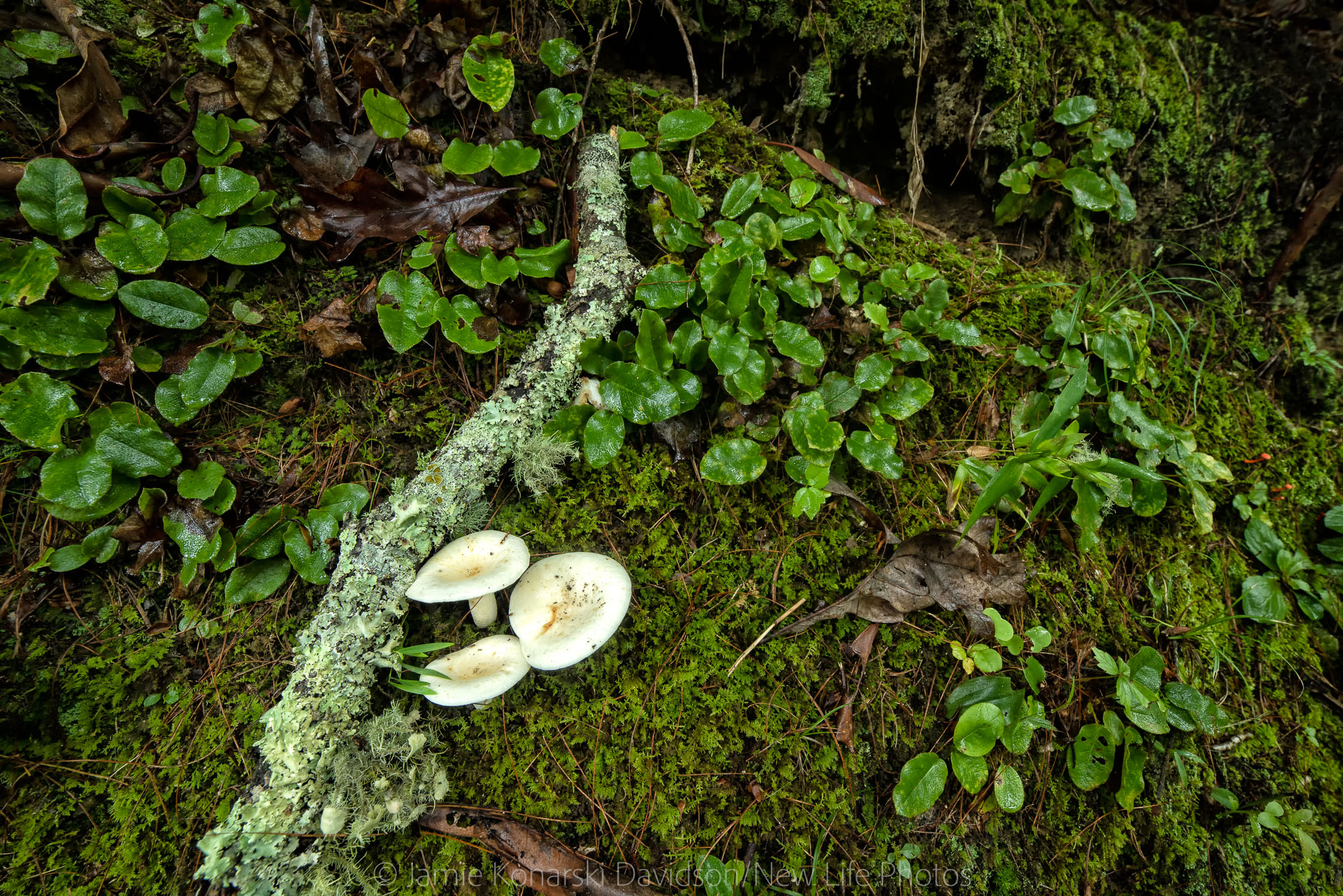
The mushrooms in all shapes, sizes and colors came alive on this wet, misting morning. Seeing the scene through the perspective of “Fourteen” helped me build this image in a way that would not have otherwise happened. The urge to switch to my macro lens, had I taken it with me, may well have changed everything. Herein lies the beauty of focusing on one place with one lens.
So, I spent one of my mornings at this place with a Rokinon 14mm f/2.8 lens and walked. And, I wondered, “Do I need this lens?” and “What can I do with it that I can’t do with what I have?” Ultra-wide is really not my style. Truth be told, for years people thought of me as one who focused on macro photography. And, yes, it is my Calgon … three macro lenses might suggest that. But macro isn’t everything or the only thing I do in my photography.
With “Fourteen” I knew there would be some challenges and that my first time out of the gate would be a learning experience. It was. I needed to draw on what I already knew and put myself to the task of getting to know the lens, the place, and the potential of both. I also needed to be prepared to “fail” in order to learn. I forced myself to use only the 14mm for most of the morning. Yes, I did take one other lens, but I didn’t break it out until it was obvious that an image I wanted was simply not possible with the Rokinon. That other lens was the Tamron 28-300mm, which gave me a great deal of flexibility and is a light carry.
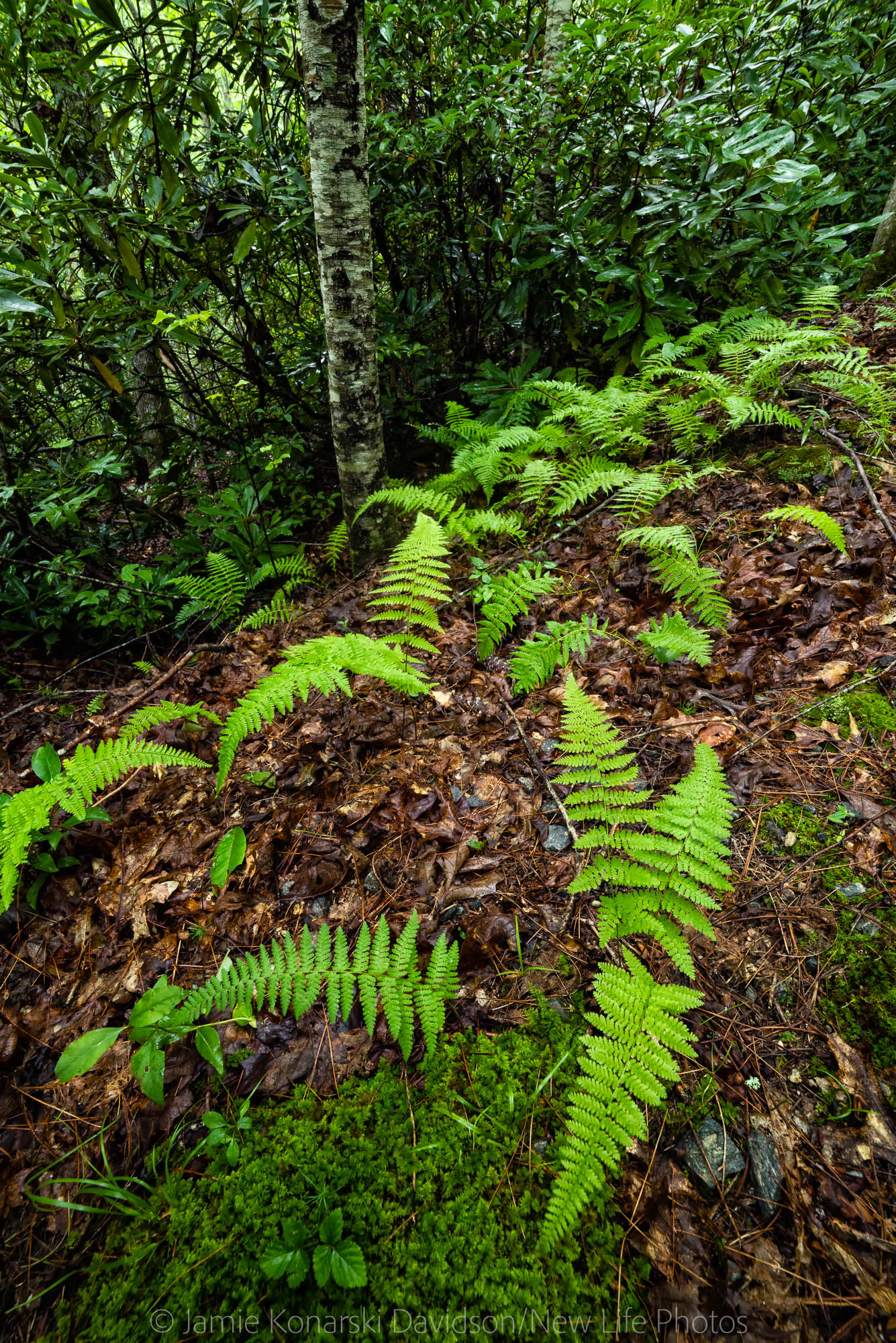
The ferns of the forest were dancing all along the semi-steep climb to the top of the hill. The vibrant and varied greens of the wet morning were mesmerizing and made the walk all the more enjoyable. Many, many places to stop, notice, absorb and express my vision.
Back to the ultra-wide Rokinon, which is, by the way, a manual focus lens. Some of the things I learned spending the morning with this lens were expected. Others were not. Here are some of those observations:
First, I really love my circular polarizer filter for outdoor and nature photography. However, using one is not an option as the front element of this lens is domed. This kept me even more mindful of the subjects I chose and the direction of light and its impact on the subjects.
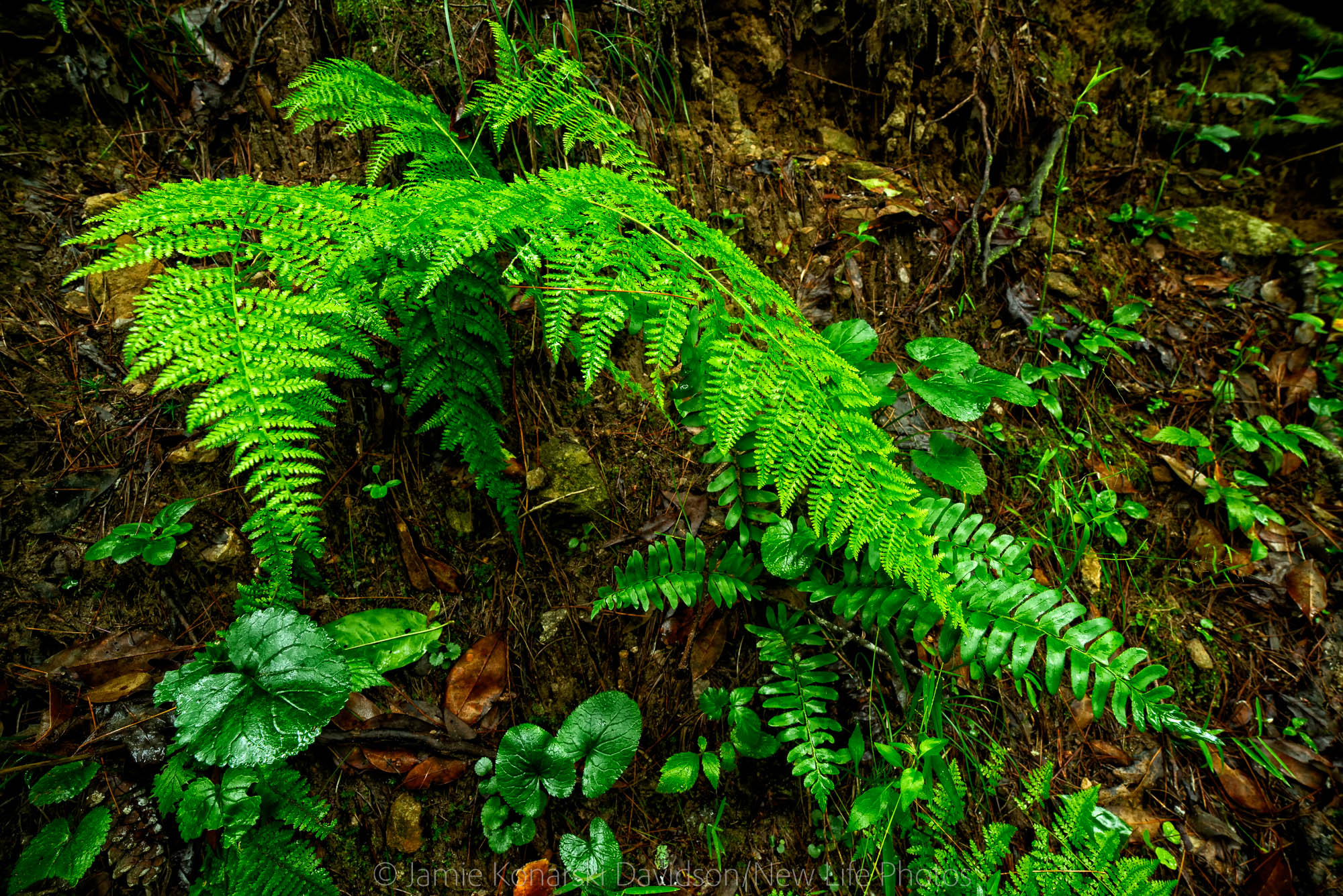
Graceful ferns on the bank of the hill made it easy to take notice. What a wonderful dance to see and capture in this image. Ultra-wide perspective, an even slower approach and patience made this possible.
Second, you can put a whole lot of stuff in the frame with an ultra-wide lens. The angle of view on this lens is 115 degrees on my full-frame Nikon D810. This means that I need to be super aware of where my tripod legs, my feet, camera strap and other tools (such as diffuser/reflector) are. And, I’ve got to be on the lookout (high alert) for things in the frame that I can or cannot move out of view and what I’m able to compose out of the frame with a step to the left, right, forward or back. A tilt of this lens up or down, I discovered, can create interesting, but mostly unwanted, distortion. I need, as always, to do my best work in the field when creating the image.
Third, you can only get so close with “Fourteen”. It is not a macro lens, no matter how much I might like it to be. How close can I get? Well, the minimum focusing distance (MFD) for this lens is eleven inches. Since I didn’t research ahead of time and don’t carry a ruler in my bag, I had to figure this out in the field. Fun times. I learned that there’s an obvious advantage with autofocus lenses. When you’re too close to your subject and have crossed the MFD line, using autofocus, you know it. You don’t get the focus confirmation “beep” or the solid ball in your viewfinder. You learn quickly that you’re too close and need to back off. With a manual focus lens, there is no beep; and, depending on where you want to focus, you may not get a solid ball either.

On this walk we discovered “Chicken of the Woods” (Laetiporus) in all its vibrant waves and intricate design attached to a downed and very wet and moss-covered tree. The ultra-wide lens allowed me to capture a sense of place that would not have been possible in this way with another lens. At least not how I was seeing it.
Fourth, You need to use your tripod. What??? Yes, you do! I needed to use my tripod. Couldn’t I get a fast-enough shutter speed to handhold? Yes, I could and did. So, why the tripod? Go back and re-read the previous three lessons I’ve shared above. That’s why. If you want sharp images, do yourself the favor of carrying and using the tripod. And bring along a shutter release cable (or wireless) to increase your chances. Any subtle movement can ruin all your hard work in composing and focusing on exactly what you want your image to look like. Pay attention.
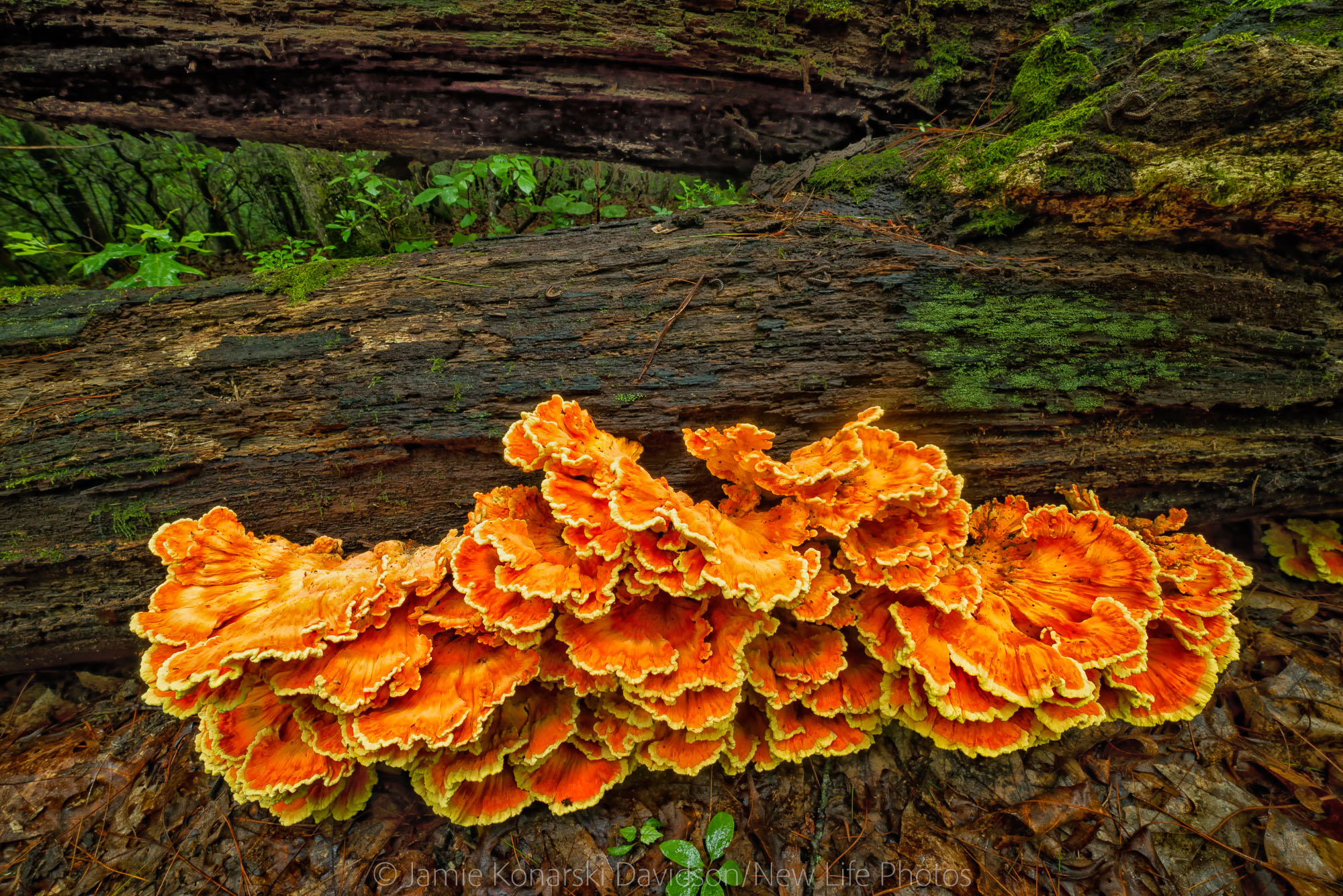
This Chicken of the Woods was about three feet wide. I was VERY close to it (likely 11 inches away, which is the minimum focusing distance of the Rokinon 14mm) . Yet, the ultra-wide lens allowed me to give context. Simply not possible with any of my macro lenses.
I learned a few more things during my “Morning with Fourteen.” I need to study more on how other photographers are using ultra-wide lenses so I can be inspired and learn even more image-making possibilities. And my eyes … they’re not as good as they used to be. With a manual focus lens, ultra-wide or otherwise, I need to work slower and be even more deliberate and attentive. This lens is also great for night photography, which is on my list to learn and do as well.
Finally, I learned that the exercise of forcing myself to use only one lens is a really good one. I will do it again, with this lens and others. You learn to see the world through different “eyes” and angles and push through to reach the lens’ limits as well as understand its potential. Are these images “perfect”? No, but that wasn’t my intention. My goal was to come to a better understanding of the creative tool I had in my hands and where I could go with it.
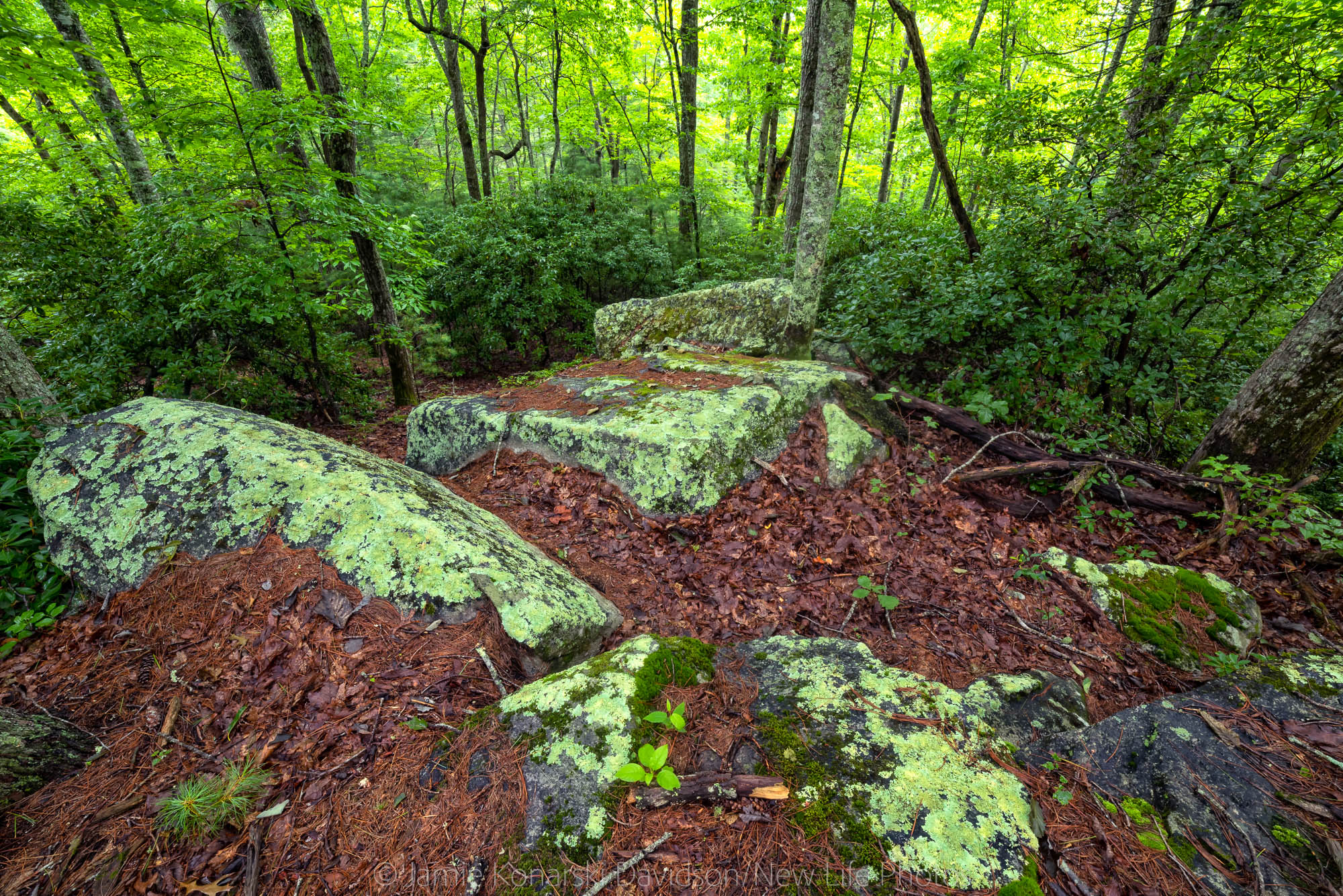
“Today I have grown taller from walking with the trees” — Karle Wilson Baker . . . This quote mirrors the feeling I experienced among the trees and boulders on “Meditation Hill” on my morning walk.
My “Morning with Fourteen” reminded me that keeping things simple (one lens, one place) opens up a new world of discovery. I gained an appreciation for this new perspective. I spent that morning with my eyes and mind open. I took my time and got to know the lens and the place a lot more than I would have without focus. I had patience – with myself and the lens – and I enjoyed the learning process. (The place, by the way, was Mountain Lens Retreat in Hendersonville, NC. I will be back.)
I enjoyed being exactly where I was, and it felt really, really good. I breathed in the morning mist, listened to the light rain drops hitting the leaves high above. I listened to the birds wake up and smelled the freshness of the forest. I sat down to take it all in – not with the camera, but with my soul.

And, just because I can … though not from my “Morning with Fourteen”, I thought I’d share an image from Looking Glass Falls on a rainy, crowded late afternoon. I clambered down the rocks and under a huge downed tree, laid down on the wet rocks and got dirty. It was an exercise in “careful agility” and an experience that demanded patience. For me, the efforts and “Fourteen” paid up.


